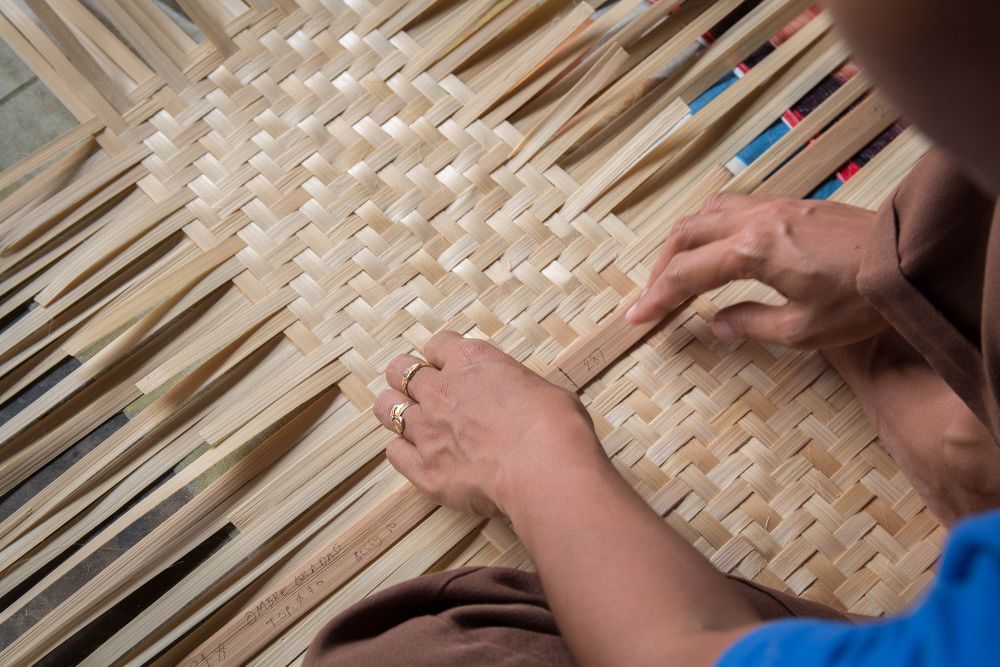
Crafting with Bamboo: Artisans' Tales
Share
In the quiet corners of rural landscapes, where life moves at a slower, more measured pace, there exists a tradition that has been passed down through generations—a tradition that is as ancient as the lands themselves. Bamboo weaving, an art form that intertwines nature's bounty with human ingenuity, has been a source of livelihood, cultural expression, and identity for many backward communities. However, for a long time, these artisans remained on the fringes of society, their craft underappreciated, and their lives marked by poverty and struggle. Today, however, the story of these bamboo weavers is one of transformation, resilience, and hope.
The Art of Bamboo Weaving: A Heritage Passed Down
Bamboo weaving is a craft that requires not just skill but also an intimate knowledge of the materials used. The artisans, often belonging to marginalized communities, learn this craft from a young age, with techniques and patterns passed down from one generation to the next. Each piece they create—a basket, a mat, or even intricate home decor items—is a testament to their connection with the land and their understanding of the natural world.
Traditionally, these artisans crafted utilitarian items for their own use or to sell in local markets. The tools of the trade were simple, the methods labor-intensive, and the returns modest. Yet, these communities held onto their craft, not just because it was their livelihood but because it was a part of who they were.
A Life of Struggles: The Challenges of Marginalization
For decades, bamboo weavers from backward communities faced numerous challenges. Their craft, though beautiful and unique, was undervalued in a rapidly modernizing world. The advent of mass-produced goods pushed their handmade creations to the sidelines, leading to dwindling demand and lower incomes. Many artisans were forced to abandon their craft in search of other forms of work, often labor-intensive and low-paying, further perpetuating the cycle of poverty.
Lack of access to education, healthcare, and financial resources further compounded their struggles. These communities were often isolated, both geographically and socially, with little support from the outside world. The intricate art of bamboo weaving, which should have been a source of pride and economic stability, became instead a symbol of their marginalization.
The Turning Point: Recognition and Revival
The turning point for many of these artisans came with the growing recognition of the value of traditional crafts and the rise of sustainable, ethical consumerism. As the world began to turn away from mass-produced, environmentally harmful products, there was a renewed interest in handmade, eco-friendly items. Bamboo weaving, with its roots in sustainable practices, began to gain attention.
The impact of efforts has been profound. Artisans who once struggled to make ends meet are now earning fair wages for their work. Their products are being sold in high-end stores and online platforms, reaching customers who appreciate the craftsmanship and the stories behind each piece. Moreover, these artisans are now being recognized as keepers of a valuable cultural heritage, with their skills being passed on to the next generation.
The Evolution of Lives: A Story of Empowerment
The evolution of the lives of bamboo weavers from backward communities is a story of empowerment. With the support of various initiatives, these artisans have been able to take control of their destinies. They have formed cooperatives, ensuring that they receive fair compensation for their work, and have gained access to markets that were previously out of reach.
Education and training programs have also played a crucial role in this transformation. Artisans are now learning new techniques, experimenting with modern designs, and incorporating their traditional patterns into contemporary products. This fusion of old and new has not only revitalized their craft but also opened up new opportunities for growth.
Additionally, with better income and access to resources, the quality of life in these communities has improved significantly. Artisans are able to send their children to school, access better healthcare, and invest in their homes and businesses. The once-precarious existence of these bamboo weavers is being replaced by a future filled with promise and potential.
Conclusion: Weaving a Future of Hope
The story of bamboo weaving artisans from backward communities is one of resilience, adaptation, and hope. It is a testament to the power of tradition and the potential for change when communities are given the support and recognition they deserve. As the world continues to embrace sustainability and the value of handmade goods, these artisans stand as a shining example of how cultural heritage can evolve to meet the demands of the modern world.
Their journey from the margins to the mainstream is not just about economic upliftment; it is about reclaiming dignity, preserving cultural identity, and weaving a future where tradition and progress go hand in hand. The bamboo weaving communities have shown that with the right support, even the most marginalized can rise, thrive, and inspire others to do the same.









